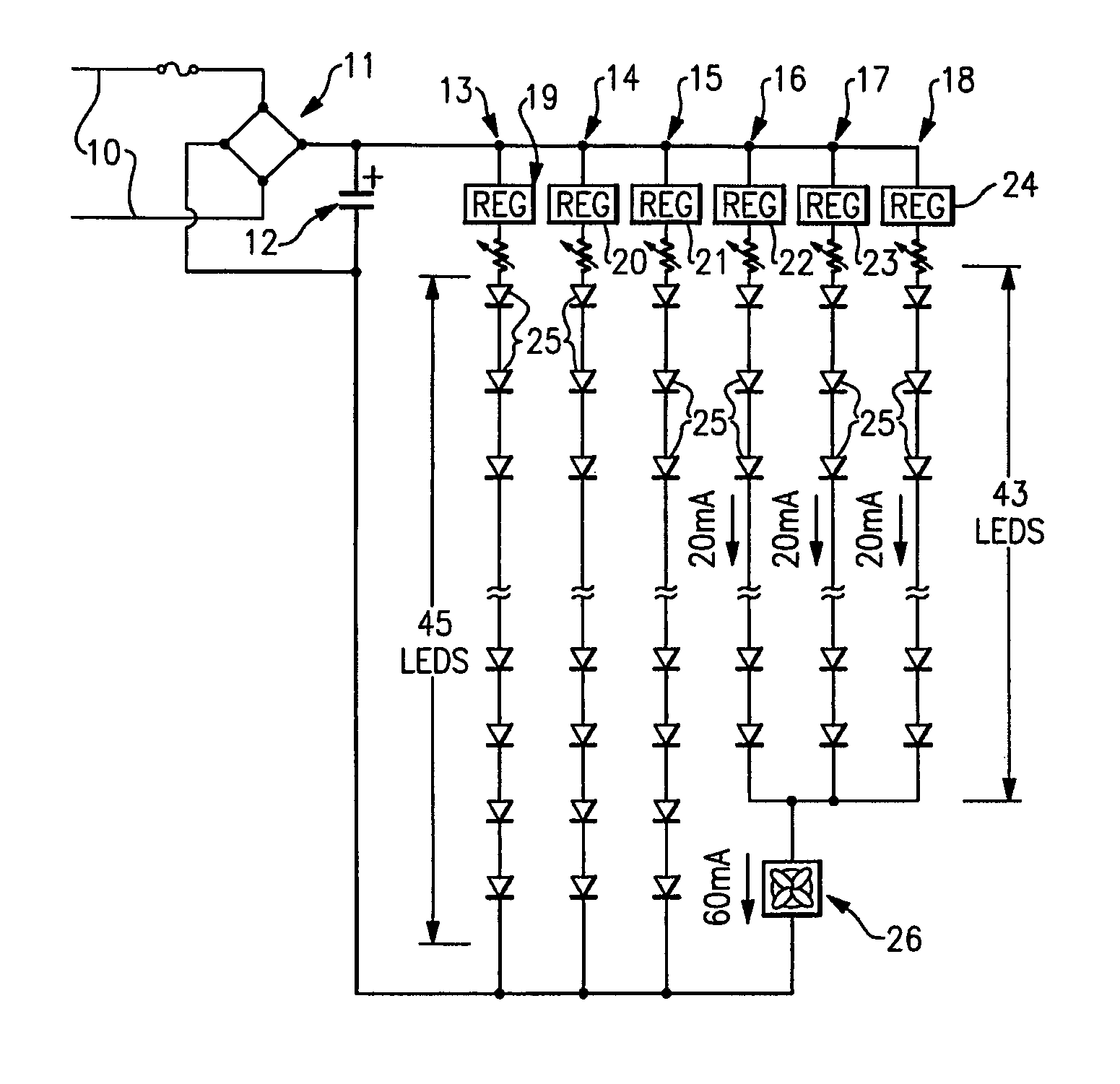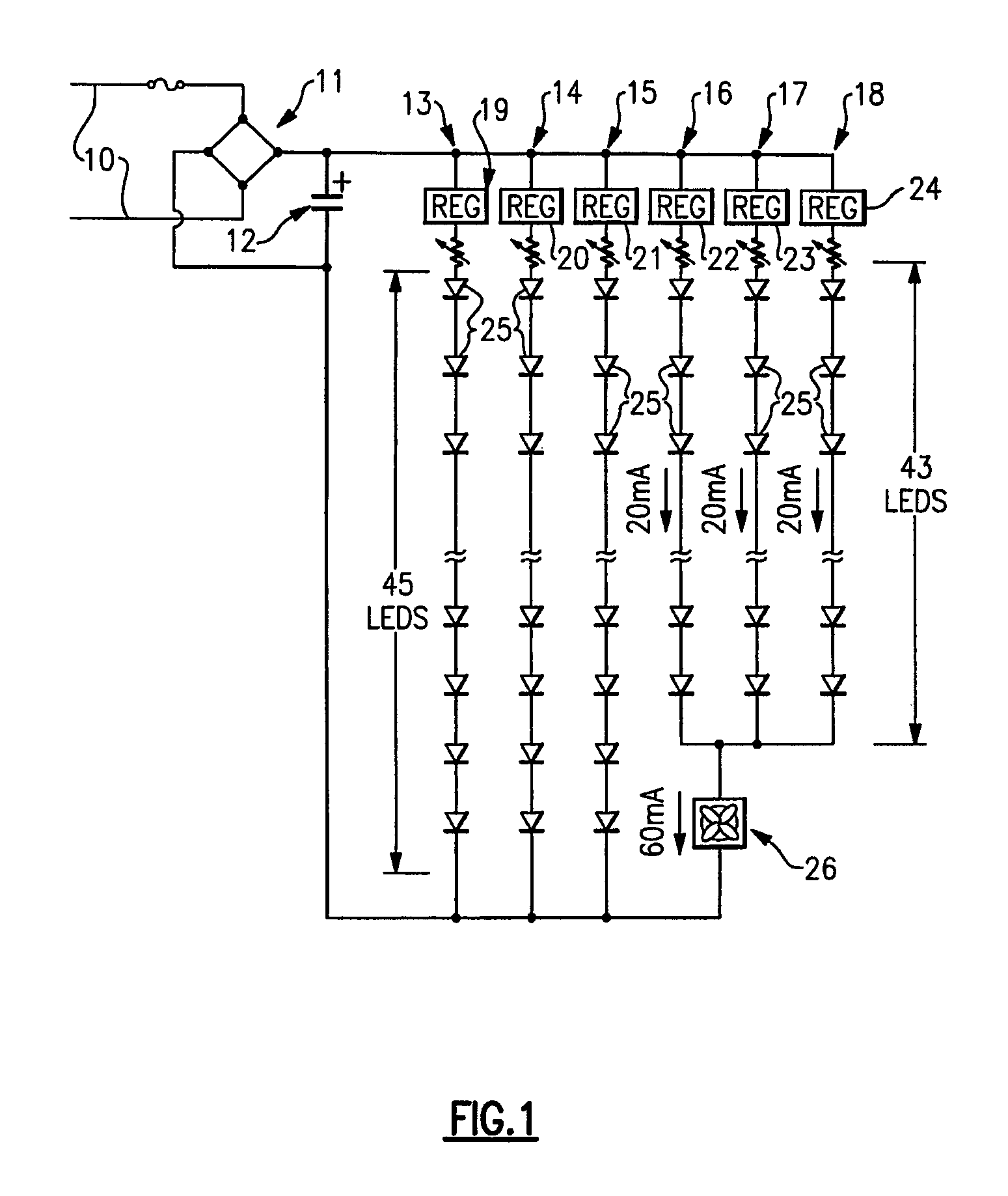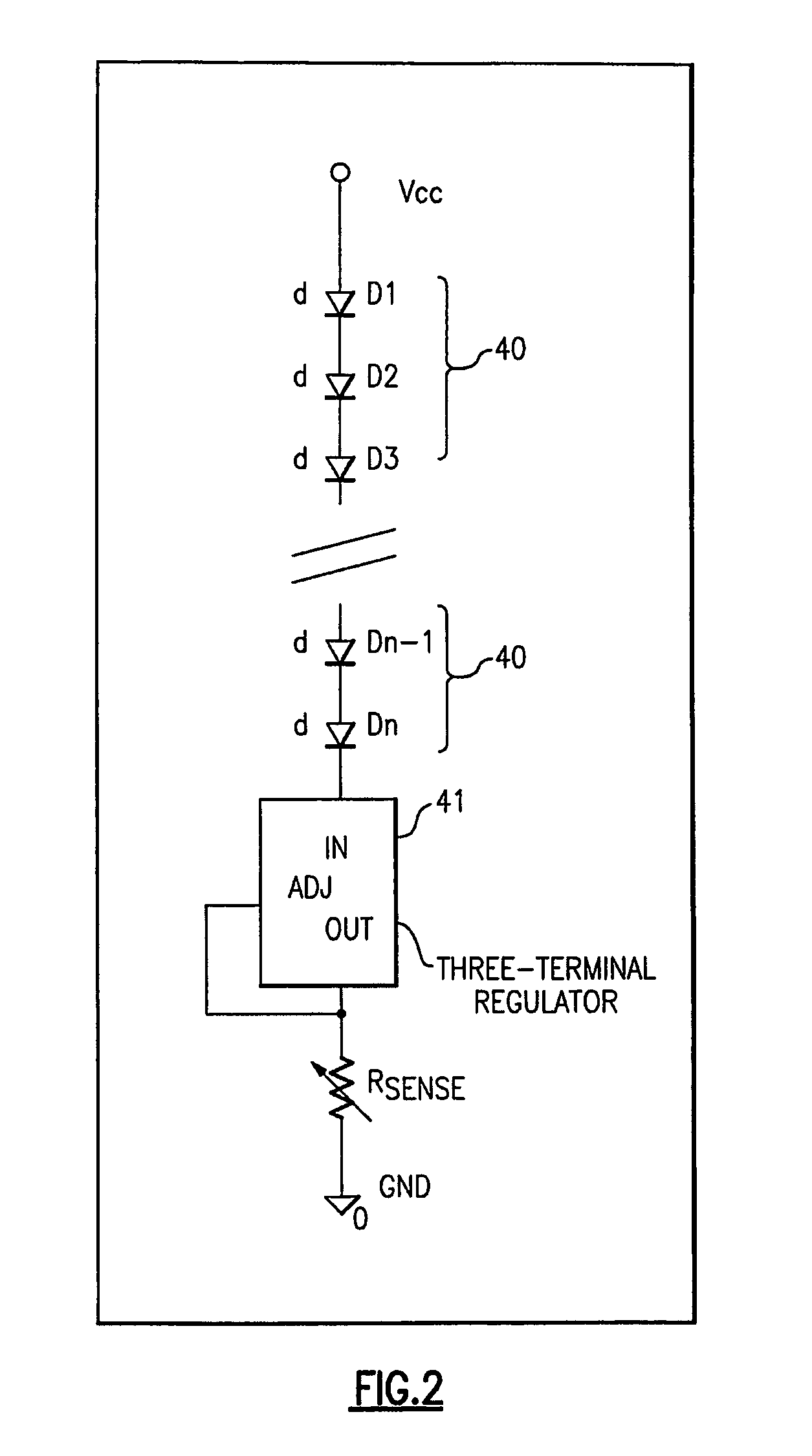Lighting device circuit with series-connected solid state light emitters and current regulator
a lighting device and solid-state light technology, applied in lighting and heating apparatus, process and machine control, instruments, etc., can solve the problems of waste heat dissipation, high efficiency of this method, and excess voltage, and achieve high efficiency, high lumen, and good efficacy
- Summary
- Abstract
- Description
- Claims
- Application Information
AI Technical Summary
Benefits of technology
Problems solved by technology
Method used
Image
Examples
Embodiment Construction
[0057]As noted above, in a first aspect according to the present invention, there is provided a circuit for a lighting device, the circuit comprising at least a first sub-circuit which comprises at least a first series current regulator and a first group of solid state light emitters.
[0058]The expression “sub-circuit”, as used herein, means circuitry comprising one or more components or features contained within a circuit (under this terminology, a circuit can itself consist of a single sub-circuit).
[0059]Any type of series current regulator can be employed in the circuits according to the present invention, and where plural series current regulators are employed, the respective series current regulators can be of similar types or can include two or more different types. Persons of skill in the art are familiar with, and have access to, a variety of types of series current regulators, and any such series current regulators can be employed in the circuits according to the present inv...
PUM
 Login to View More
Login to View More Abstract
Description
Claims
Application Information
 Login to View More
Login to View More - R&D
- Intellectual Property
- Life Sciences
- Materials
- Tech Scout
- Unparalleled Data Quality
- Higher Quality Content
- 60% Fewer Hallucinations
Browse by: Latest US Patents, China's latest patents, Technical Efficacy Thesaurus, Application Domain, Technology Topic, Popular Technical Reports.
© 2025 PatSnap. All rights reserved.Legal|Privacy policy|Modern Slavery Act Transparency Statement|Sitemap|About US| Contact US: help@patsnap.com



